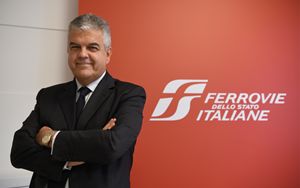(Finance) – “Rail transport must become the backbone of the mobility of the future which will be increasingly integrated, intermodal and sustainable”. Interviewed by the journalist Alessandra Capozzi, the managing director of the FS Group Luigi Ferraris to the Economics Festival of Trento, organized by Il Sole 24 Ore, outlined an overview of the commitments of the Italian FS group for the development of mobility in the country, one year after the launch of the FS Business Plan.
A 360-degree look, that of Ferraris, which touched the main ones one after the other challenges of Italian State Railways and some scenarios future. Among these, also a reflection on the need to put together private and public component to finance the works, looking at the whole life of the projects, ceasing to “reason in batches. Only in this way, also by intensifying the public-private dialogue, will it be possible to streamline the process and face the many infrastructural challenges on the table”. In fact, according to the CEO of FS, the model used for electricity grids could be replicated through capital management regulatory mechanisms and also attracting part of that managed savings, for example, from pension funds and social security funds to future projects.
At the heart of this new way of looking at mobility for Ferraris there are obviously the infrastructures, which need to be modernized “since in our country they were built in times that had goals of mobility different from those of today”. And the FS Group is doing its part in this, also as the main implementing body of the PNRR so we are in line with the times. “Today we are engaged, for example, in two central works: the Third Genoa Passwhere we have completed 83% of the tunnel and 100% of the doubling of railway capacity between Genoa Piazza Principe and Genoa Brignole and which will have a decisive impact on freight and passenger transport, and the Naples-Bari which will allow to connect the two cities in 2 hours of travel”.
Another topic is the promotion ofintermodality of transport which according to the CEO of FS “must concern both passengers and goods and promote an integrated collective transport offer which must be based on an increasingly dense and coordinated dialogue between the various transport players involved”.
And it is precisely from this point of view that the agreements that the FS Group has signed, in favor of the transport of passengers with airport operators as Rome airportsae airlines such as ITA And Lufthansa “to promote an increasingly integrated travel experience, thanks to the combined train+air ticket which allows passengers to be able to purchase their flight and rail journey with a single check-in” at the dedicated desks of the railway station Leonardo da Vinci International Airport of Fiumicino.
But as Luigi Ferraris has always underlined, intermodality must also concern the transport goods, which “on rails is still stuck at 10% due to infrastructure shortcomings, but which can benefit from the connection between the railway and road network with the main access points of the country: stations, airports and ports”. An integration that can make rail transport the vector for transporting goods over long distances, leaving the so-called first and last mile to road transport. “Only in this way – underlined Ferraris – could we avoid our roads becoming increasingly congested in the future, given that the forecasts speak of the unsustainable scenario of 1 million more heavy vehicles in the coming years along European roads”.
Furthermore, in the overview of the CEO Luigi Ferraris, ample space was dedicated to two central themes in the Industrial Plan of the FS Group: digitization and theenergy self-production. “There digitization – said Ferraris – it connects to the theme of infrastructures because it helps control their state, with the maintenance predictive, but also meets the needs of passengers. For this reason, in recent days we signed an agreement with the Government for the development of optic fiber along 16 thousand kilometers of railway networks, which can represent a natural network to offer excellent online navigation on board the train and solve many connectivity problems in the more peripheral areas of the country. Meanwhile by September the line 4G it will be active on the entire Milan-Rome high-speed line and in the next few years it will also be widespread on other trains”.
As for the theme energeticLuigi Ferraris reiterated the goal of 40% renewable energy self-production by 2027. “We have already launched a tender to identify the sites of the first installations photovoltaics. The construction process is progressing. A new tender will be launched in October to identify and build new plants from Northern to Southern Italy. Already from 2024 FS will begin to generate energy”.
